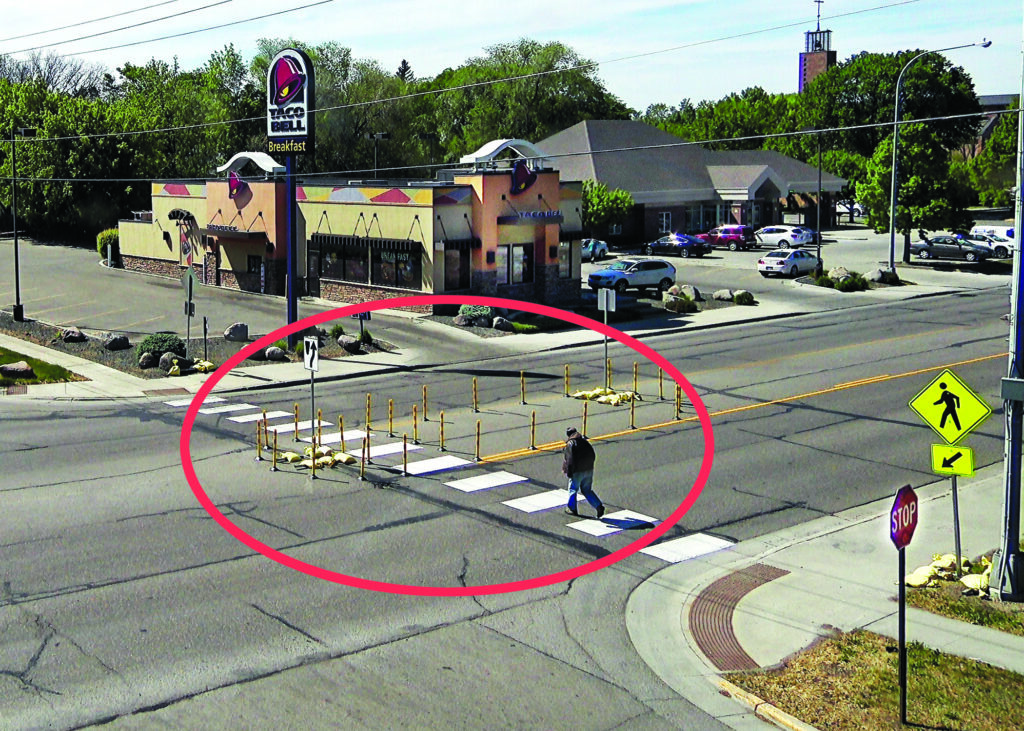
Problems crossing busy Eighth Street have drawn many pedestrian complaints, so the city and Minnesota Department of Transportation — which partner on the managing the street, which is also part of U.S. Highway 75 — have set up an experimental safety island in the middle at Fourth Avenue South. (Photo/MnDOT.)
Nancy Edmonds Hanson
Crossing Eighth Street near downtown Moorhead can be a challenge, especially when traffic peaks during morning and evening drive times and at midday. But pedestrians who aren’t sprinters may get a break someday, based on the results of an experimental “refuge island” in the middle of the five-lane route at Fourth Avenue South.
“We’ve received quite a few complaints about that crossing over the past couple of years,” says city traffic engineer Jonathan Atkins. “It’s a busy street, and it’s three times as wide as most – 72 feet across five lanes.”
The demonstration project – the city’s first such experiment – is scheduled to be monitored through Tuesday, June 8. The traffic cones that mark off the safe space will come out again in September at the Third Avenue crossing, intended to compare which is used more widely.
A similar refuge island – a raised area separated from the roadway by a six-inch curb – has been in place on 16th Avenue North at 17th Street since 2019.
The demonstration island under study is nearly midway between signal lights at Seventh and Main Avenues. While a light might be justifiable in that distance, Atkins says, the traffic count doesn’t justify the substantial investment. The only negative to the far more economical pedestrian island, he notes, is snow removal.
He says the island would be preferable to the so-called HAWK signal installed near Concordia in 2012. In that spot, pedestrians push a button, causing a signal to go from flashing yellow to red to flashing red. The HAWK – an imperfect acronym for “High-Intensity Activated Crosswalk” – can be confusing, he notes.
The refuge island data will be reviewed by the city and MnDOT, who jointly manage the stretch of U.S. Highway 75 that passes through the city. Even with a positive conclusion, however, the solution to pedestrian woes would lie several years in the future, when other work on Eighth Street – including straightening the two S-curves in the vicinity – can be scheduled at the earliest.
“A solution won’t happen overnight,” Atkins says. “But it’s best to do it right.”


